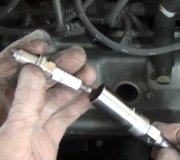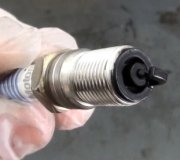After I got the engine all back together, it was quite smooth, but after a long 200 mile run, the humming and vibration started. I opened the engine to see if I could find trouble. I found that the rear bearing had started to fail. I had the rear bearing journal dressed and checked, and installed a new bearing, which doesn't seem to have troubles. I try not to take the car over 55, though it was originally quite capable of going 99 mph (not that I ever sustained speeds over 65). I am wondering if my not having the flywheel balanced with the crankshaft and pistons is what is causing this vibration, since they were all originally in balance as a unit. With the crankshaft now being balanced as its own unit (including pistons), I feel that it is now out of balance with the flywheel. Would balancing the flywheel and pressure plate as its own unit now correct the trouble? I really don't care to remove the crankshaft again.
I also wonder if this vibration is robbing power and mileage. The car has very good acceleration at lower speeds, but the power tends to be a bit lacking at higher speeds, and gets worse after a long run (everything else is well adjusted--valves, heat riser (which can severely rob power if intake overheats), carburetor, timing, and all the other things that can rob power after a long run). I used to always be able to get 18-20 mpg with the car prior to the vibration, which is typical mileage for this car. Now I usually get 16, and sometimes worse. Only rarely do I get 18 mpg. The carburetor is well adjusted and well jetted, and the engine does not misfire as far as I can tell, though I have noticed that one spark plug is a shade ever so slightly more brown than the rest, which are, only after much driving, a very light shade of tan or gray. I don't feel that the vibration is from misfiring or anything in the fuel/ignition department. Valves seal well, and compression is good. All valve springs seem to function well, and were shimmed after the rebuild. All valves have good clearance--.015 inches for exhaust, and.008 for intake, after engine is thoroughly warm and normalized.
What causes the vibration?
Thank you much!
Thomas
Monday, September 17th, 2007 AT 11:26 PM



